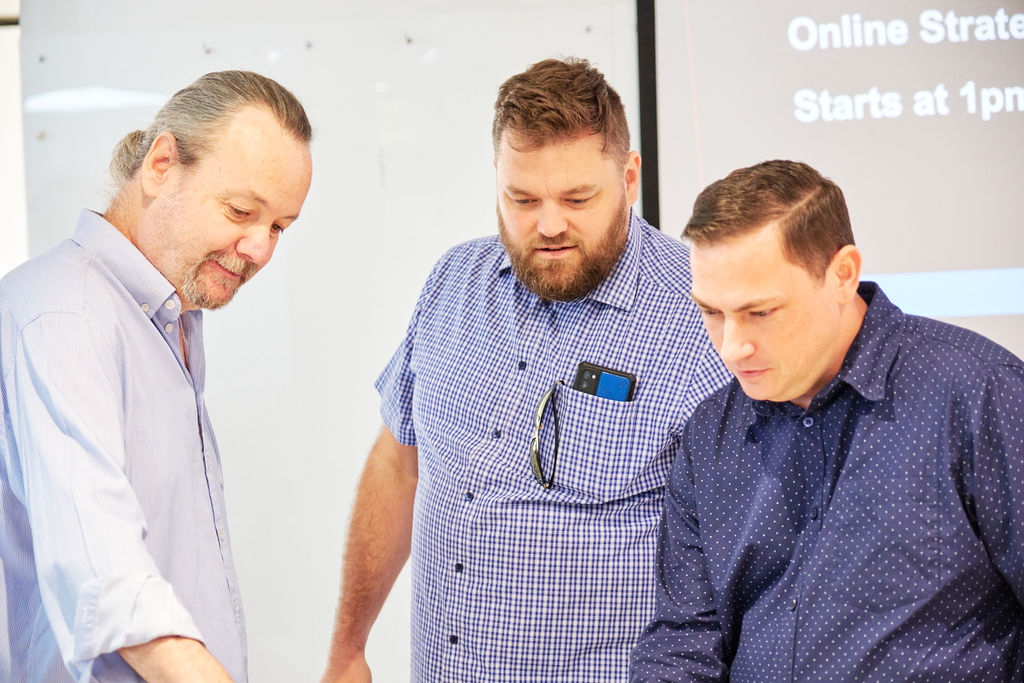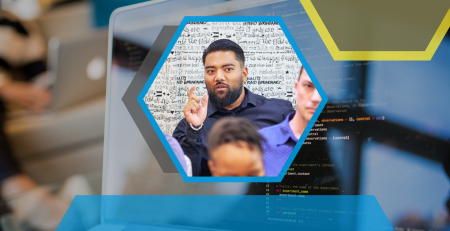AI Tools for Productivity in Tech Teams
Technology waits for no man. So, development leads and IT managers are always searching for the next big thing to boost productivity and improve how their teams work together. In this digital age, Artificial Intelligence (AI) has proven to be a powerhouse for efficiency, providing tools that strengthen team cohesion. Here at Saratoga, we’re diving deep into the world of AI tools to explore innovative platforms beyond the well-known ChatGPT and CoPilot. We want to see for ourselves how they can transform the practices of tech teams. We are very involved in this process.
This post explores three categories of team productivity that can be really ramped up with AI tools.
These include:
- Coordinating meetings,
- Visualising data, and
- Aiding in design and documentation collaboration
So, let’s begin.
1. Be Better at Meetings
As the modern proverb might go, “a meeting well-planned is a meeting half-done!”. Need to streamline schedules and communication that works for everyone? These AI tools to optimise meetings will help.
The AI Tools for Meetings
Tools such as Read AI and Otter AI can be a game-changer.
These AI tools take a close look at each team member’s schedule and preferences to find the best times for meetings. They make sure that everyone can join in, without throwing off their work.These smart scheduling tools not only makes organising meetings a breeze, but also blends smoothly with the calendar apps you already use.
A real must-have for development leads who want to cut down on the hassle, guarantee everyone can make it to important meetings, and ensure that there is an allocated scribe.
These tools record transcripts and take screenshots of the meeting to generate notes and action items. Therefore, when using such a tool, we would advise that you obtain buy-in from your attendees before using them, so that it’s not deemed as intrusive and/or invasive.
Another pointer would be to review the minutes captured for accuracy before sharing it further.
Key Features
- Automatic scheduling suggestions based on team availability
- Integration with popular calendar apps
- Preferences and priority settings for critical meetings
Benefits for Tech Teams
- Reduces time spent on coordinating schedules
- Ensures higher attendance and participation in important discussions
- Helps in maintaining a balance between collaborative needs and individual work time
- Automatic meeting minutes and action items
Drawbacks for Tech Teams
One would need to go through setup criteria carefully so that it does not erroneously join sessions.
2. Turn Data into Decisions
Raw data can be as palatable and easy to digest as a bowl of cardboard.
The AI Tools for Data Visualisation
Rows, Ana and Columns stand out in the world of AI-powered data visualisation, as they help teams clearly see and understand their project metrics and performance data.
Their smart AI features dig into the data to reveal trends and patterns you might miss otherwise. They give teams and leaders more than just charts and graphs; the tools provide predictive insights that can shape your next moves and strategies.
These tools are especially valuable for IT managers who need to make quick, informed decisions based on solid data.
As a precaution, these tools were tested using anonymised sample data in the trail runs.
Key Features
- Advanced analytics powered by AI
- Interactive dashboards and real-time data updates
- Capability to handle large datasets and complex variables
Benefits for Tech Teams
- Empowers teams with data-driven decision-making capabilities
- Enhances understanding of project impacts and outcomes
Facilitates a proactive approach to project management and troubleshooting
Drawbacks for Tech Teams
- Some of these tools can be tricky to master all the features, which can slow things down at first.
- The insights you get are as good as the data you put in. Data issues could result in off results and ultimately lead to bad decisions.
3. Collaborate Better: Streamline Design and Documentation Creation
The AI Tools for Collaboration and Documentation
We’ve tested Miro, Figma, PaceAI, Tango, and Guidde as tools to help our tech teams work better together on design and documentation. Here’s what we’ve found.
Miro and Figma have completely changed how tech teams work together on design and technical projects.
Miro acts like a digital whiteboard, perfect for brainstorming, agile planning, and collaborating from afar, which is useful for teams spread across different locations, like ours. Meanwhile, Figma shines in creating and prototyping user interfaces, equipped with powerful tools that let several people work on a design at the same time. Figma also has a great AI feature called FigJam which allows users to quickly create interactive diagrams, flowcharts, and brainstorming sessions in a user-friendly, collaborative environment.
PaceAI can also significantly increase IT teams’ productivity by automating the generation and analysis of technical documentation, which saves time and allows team members to focus on more strategic tasks. The platform offers a suite of over 35 specialised AI tools tailored for IT professionals, which streamline processes such as creating user stories, generating requirements, and producing technical documentation. This comprehensive suite helps in making quick, data-driven decisions, enhancing efficiency across various project stages. This tool is catered to Business Analysts, Project Manager, Product Owners, and Data Analysts. This tool has been tested on documenting requirements, project plans as well as simplifying technical jargon to be communicated to business.

Tango and Guidde stand out for their innovative approaches to workflow optimisation. These enhance team efficiency by automatically capturing and documenting step-by-step processes as they are performed, creating visual guides that can be easily shared for onboarding or across distributed teams. This can serve as an on-demand knowledge hub, offering teams the ability to create, store, and share bite-sized video tutorials and guides, effectively acting as a 24/7 coach that speeds up problem-solving and promotes a self-service culture within teams. Both tools are instrumental in environments that prioritise continuous improvement and effective knowledge sharing. We’ve tested these out on our internal time capturing system, like most AI tool results, some editing was required and a good demo script beforehand is helpful.
Key Features
- Miro: Interactive boards, integration with agile tools, and extensive templating
- Figma: Real-time collaboration on designs, extensive plugin ecosystem, and version control
- PaceAI: Create documents and perform tasks specific to Data Analyst, Business Analyst, Product and Project Manager roles.
- Tango and Guidde: Easy creation and sharing of video tutorials with built-in image editing to more accurately depict the process being demo’d.
Benefits for Tech Teams
- Facilitates real-time collaboration across global teams
- Enhances creativity and innovation through shared workspaces
- Streamlines the design-to-development workflow, reducing time-to-market for new features
- They foster a collaborative culture by making it easy to share knowledge and solutions, reducing silos within the company.
Drawbacks for Tech Teams
- Dependency on strong and stable internet connections to function optimally. This dependency can be a significant hindrance in areas with unreliable internet service, potentially disrupting workflow and collaboration.
- Reliance on digital collaboration and documentation tools could decrease personal interaction and potential overlook of non-digital creative processes and solutions.
Are AI Tools Perfect? No. Are They Useful? Yes.
When you bring AI tools into your tech team, they can improve productivity, collaboration, and teamwork. For development leads and IT managers, adopting these tools isn’t just about staying current with tech trends—it’s about building a culture of efficiency, learning, and making data-driven decisions.
As the tech world continues to grow and change, so do the tools we use, becoming even more advanced to help improve how teams work together and get things done. Commercial tools are releasing AI features which reduce the learning curve and can still add to the team’s productivity.
While some of these AI tools are user-friendly and accessible to everyone, they truly become beneficial when you use your professional expertise to craft specific prompts.
Remember, these tools are not perfect, so resist the temptation to rely on and put too much trust in AI tech. These tools are just a starting point. It is crucial that you trust your gut and critical thinking to review the outputs.
It’s also smart to familiarise yourself with the privacy and data protection policies of these tools. When working with a lot of sensitive data, you’ve got to be extra careful about keeping it safe. If you have questions, don’t hesitate to ask ChatGPT for clarity on these policies.
Read our blog on how to implement AI ethically in business solutions.
Final Thoughts
AI technology continues to advance at a rate of knots, take your time to explore your options thoroughly before deciding on a tool.
We’re excited for you to try out some of the tools we’ve discussed here and would love to hear about your experiences. As we pursue the most effective AI tools for tech teams, be sure to keep an eye on our blog for more updates and insights on AI and other cutting-edge technologies from our expert team.









